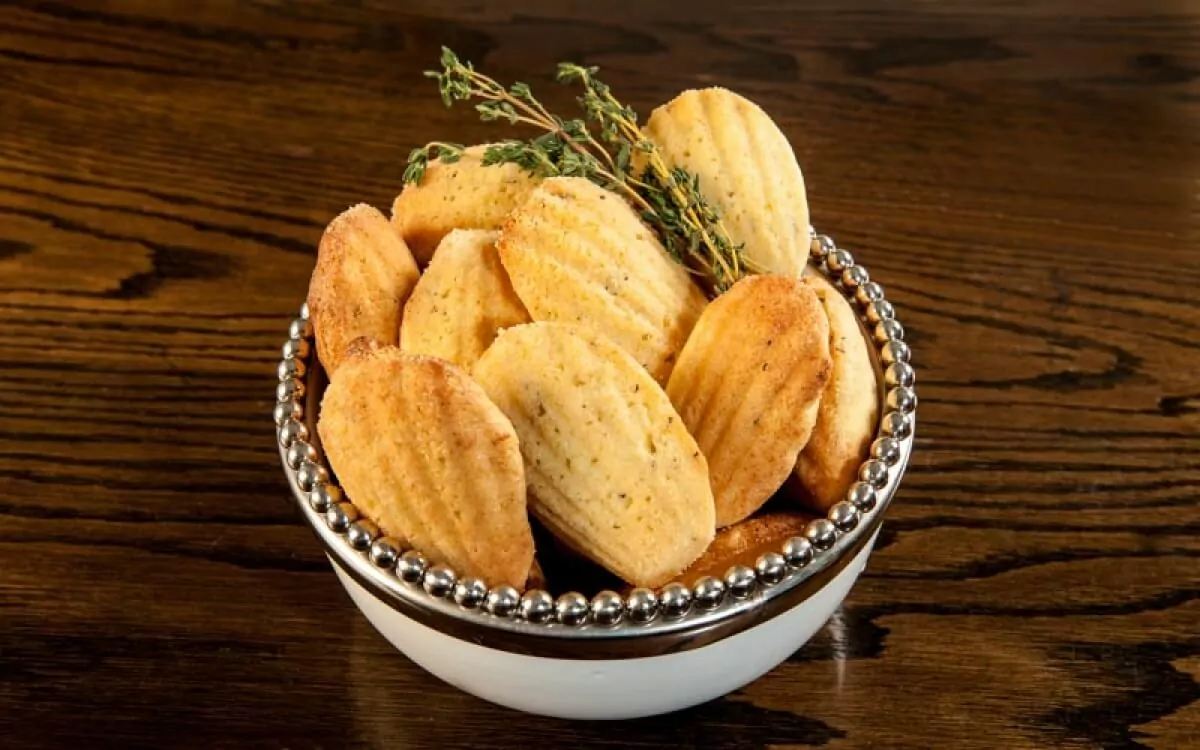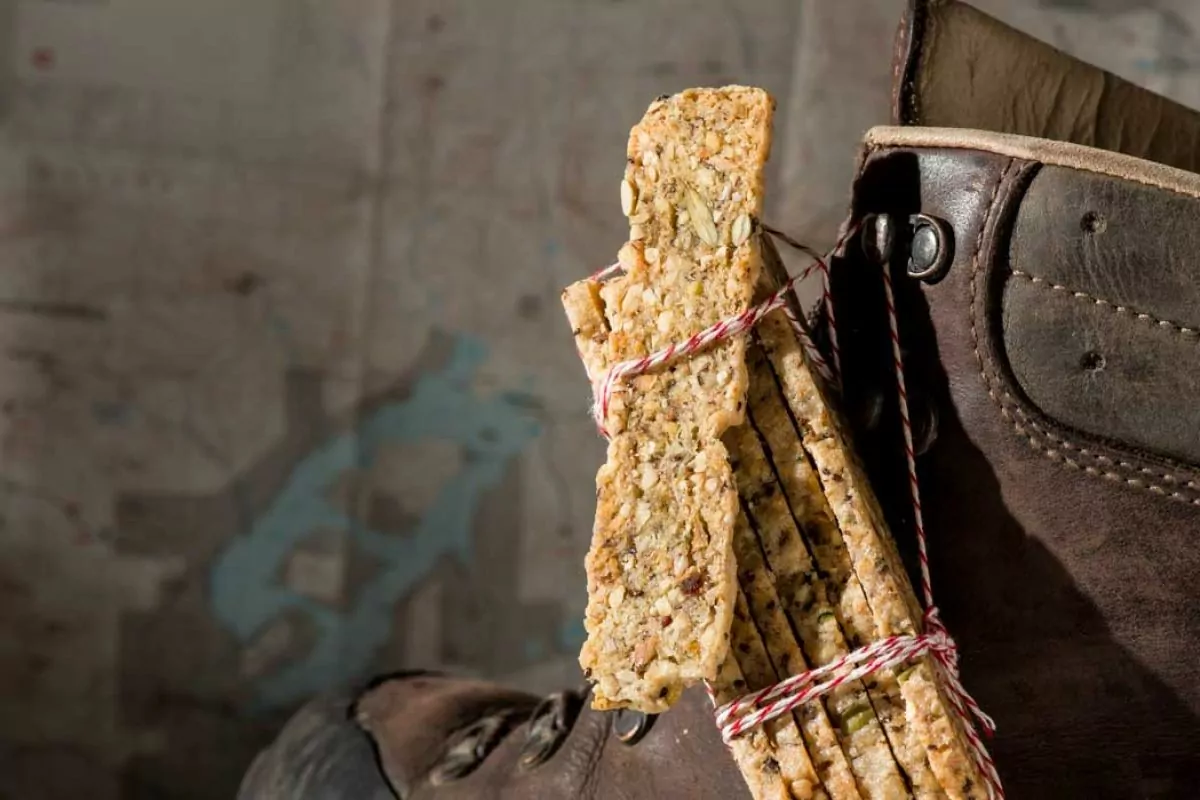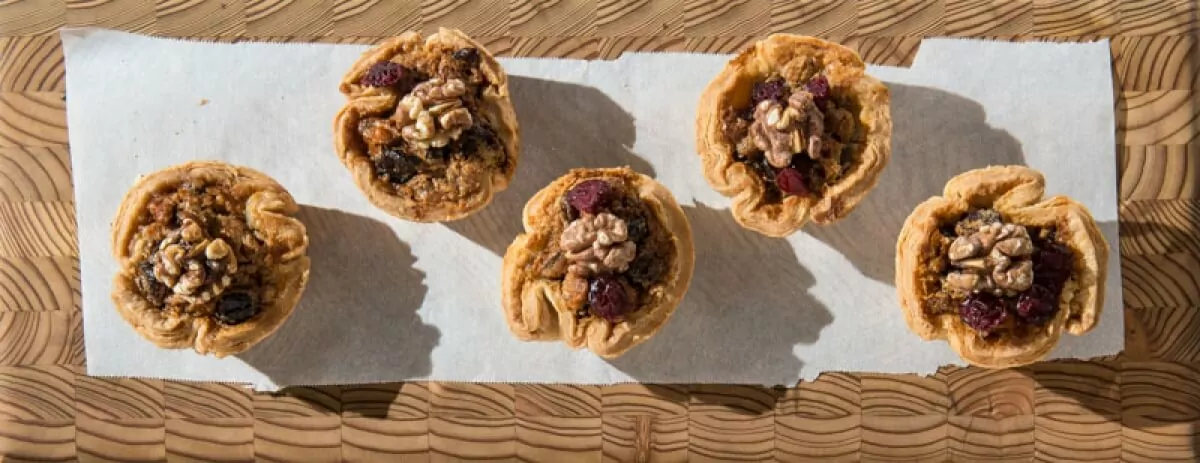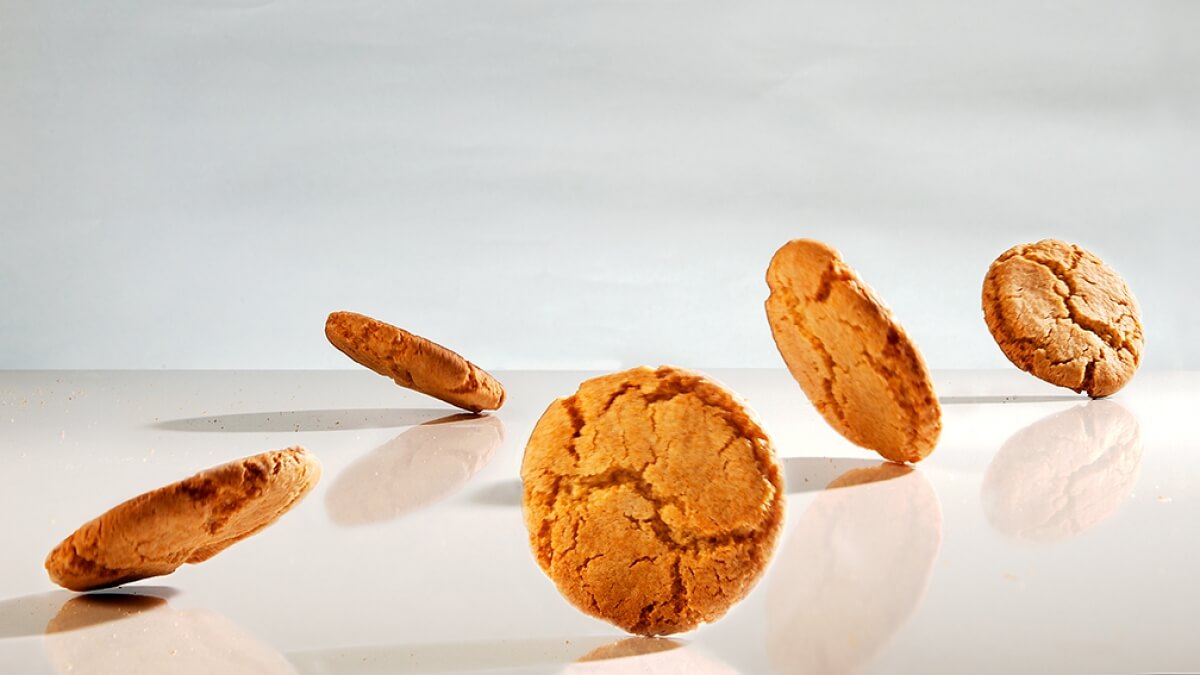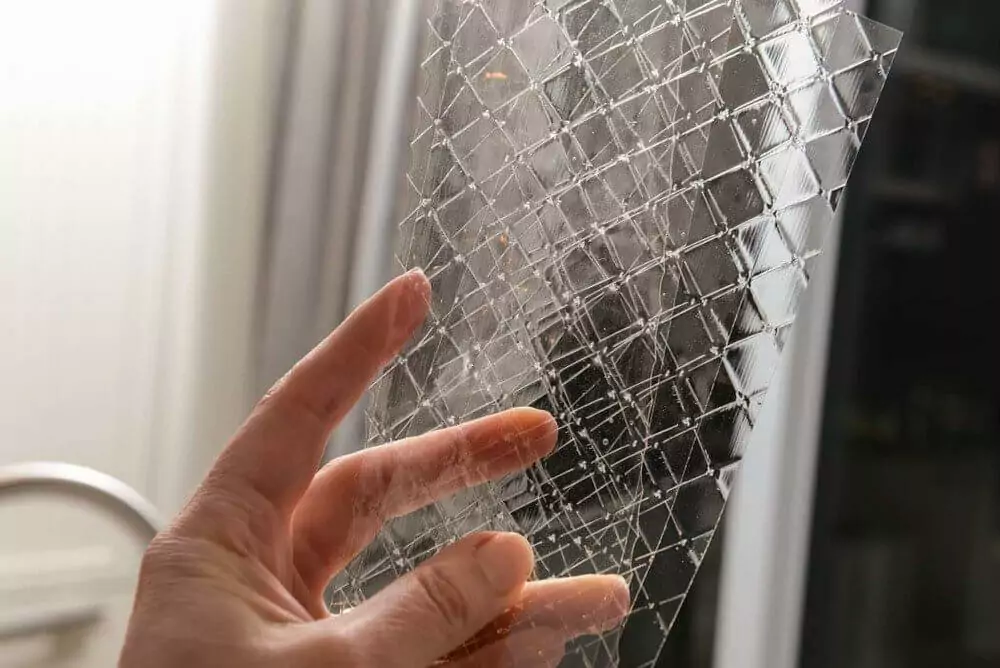
Gelatin from Soup to Jelly – The Unflavoured Truth
May 26, 2016
Ingredients

Instructions
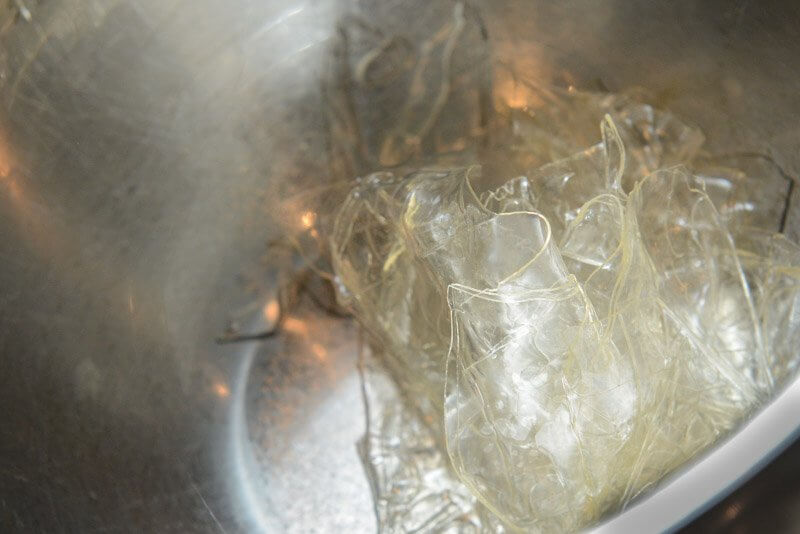
THE BACK STORY
Ever simmer bones and notice that the broth had a gelatinous consistency once cold? This texture is due to a natural process whereby gelatin is released with gentle cooking over long periods of time. Prolonged simmering coaxes the collagen from the bones and cartilidge of beef or pork into the broth. Once clarified, it becomes a pure protein that acts as a reliable gelling agent or thickener that you can use to create texture in sweet and savoury foods. Early gelatin was extracted only in the kitchens of wealthy households because the process was far too time consuming for the working class. The availability of gelatin changed when in 1889, Charles Knox of Johnstown New York commercialized this valuable ingredient. He revolutionized the American housewives’ ability to jellify broth, syrup, mousse, chiffons, custards and creams. Today his powder is the standard format specified in recipes, and sits on almost every grocery shelf and in almost every kitchen pantry. Alternate to powder, gelatin can be dried into brittle and translucent leafs or sheets. I’ll discuss the pro’s and con’s of each format below.
SET YOUR MIND AT EASE – GELATIN COMES IN TWO FORMATS
SIMPLE TO FIND GRANULATED POWDER
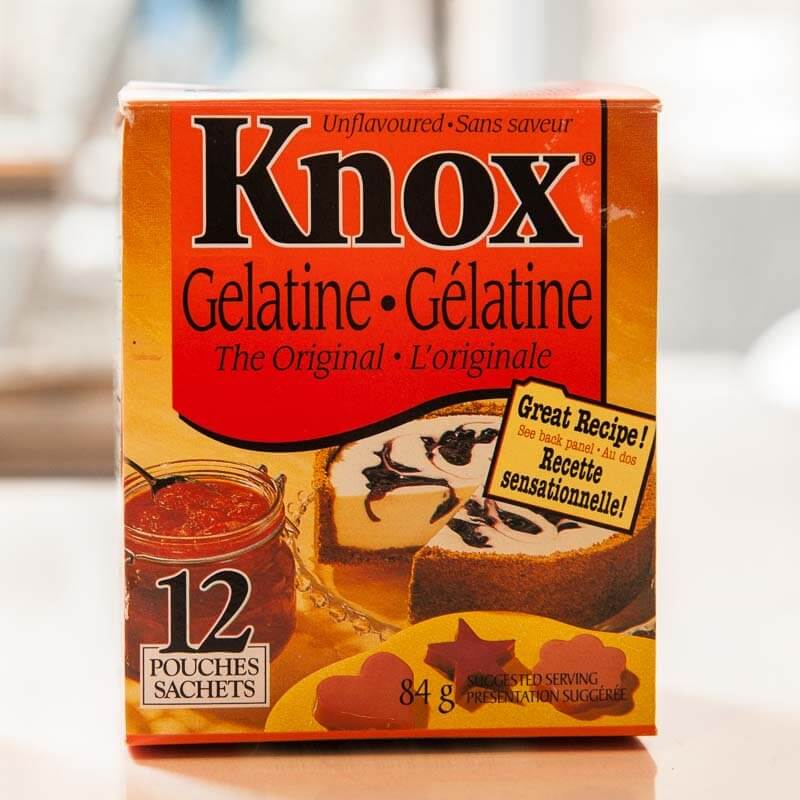
Sold in grocery stores everywhere, unflavoured powdered gelatin is a pantry staple. From soup to jelly, it thickens and stabilizes sweet and savoury liquids. Dry powder rehydrates quickly in cold water. For it to effectively gel, each granule must absorb water. This process is called “softening” or “blooming”, and will take about 5 minutes. Softening powdered gelatin can be a little tricky because you must sprinkle the powder very slowly over cold water in order to expose each granule to the liquid. Pouring or dumping the powder into the water will cause the granules to clump and prevent it from dissolving properly, which will reduce the gel strength overall.
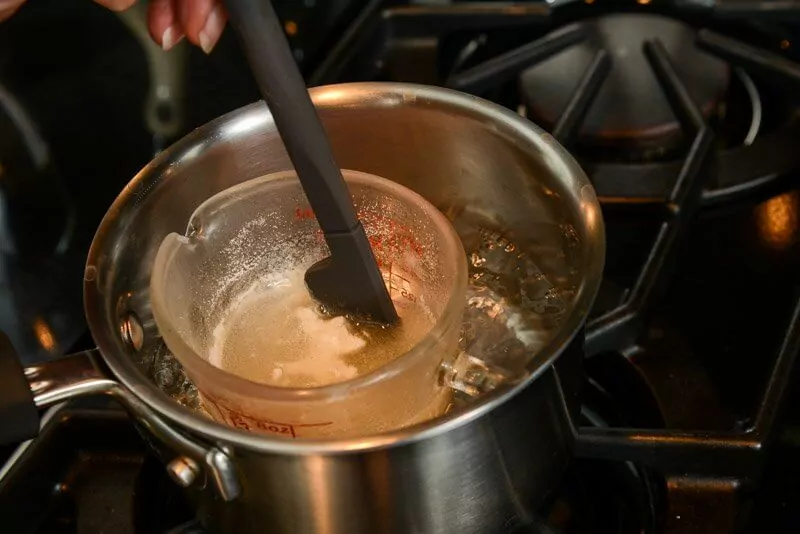
You must dissolve softened gelatin either in your recipe or before adding it to your recipe. Sometimes the instructions will say to melt the bloomed or softened gelatin directly in the custard. Or it will suggest you dissolve it first. To melt it, first soften the granules in a ceramic or glass container, then place the cup into a shallow bath of simmering water. The indirect heat will melt and liquify the gelatin quickly. It will have a grey hue and will appear thick and concentrated. Careful to keep the heat gentle since you don’t want the water to evaporate. The thicker the liquid becomes, the quicker it will set when added to your cold custard (for example).
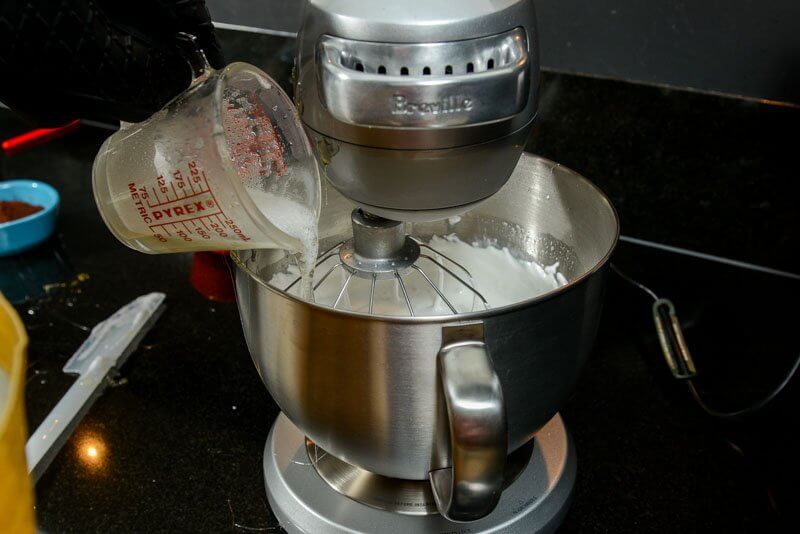
DISCOVER THE FINE RESULTS OF LEAVES OR SHEETS
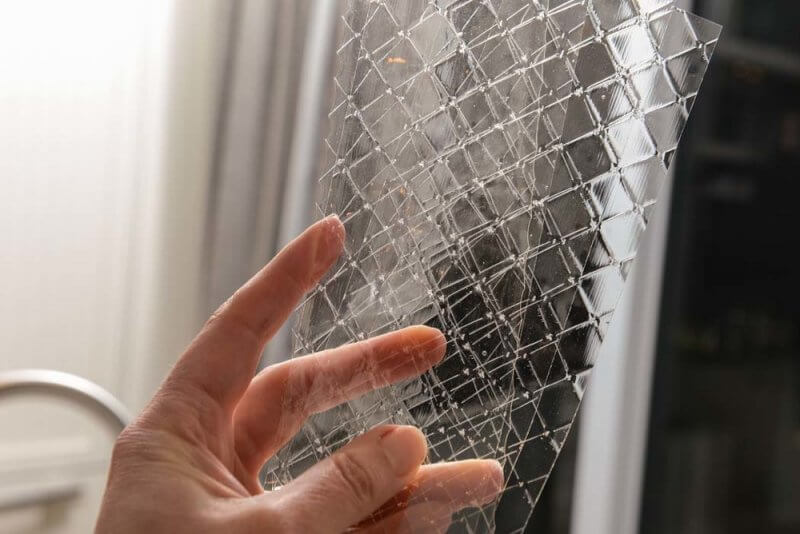
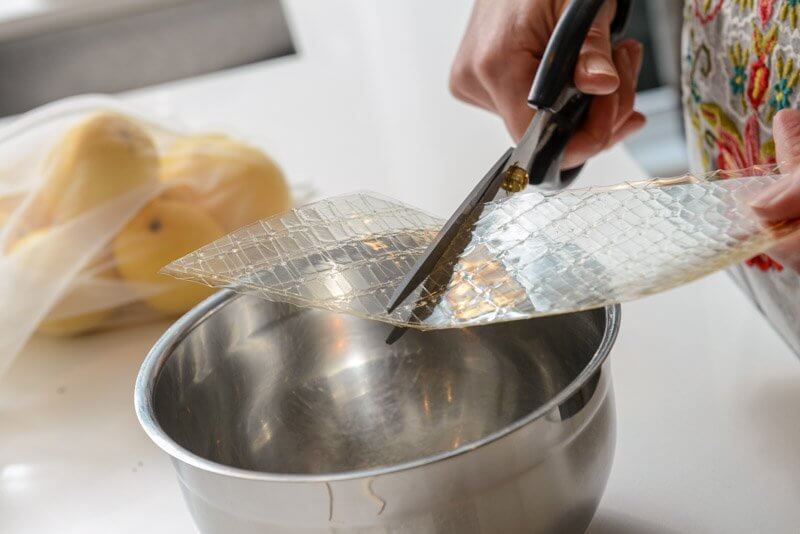
Sheet gelatin is pure collagen protein dried into brittle, transparent sheets. The leaves are sold in sections about 2 inches by 6 inches and are easy to cut into smaller pieces with a pair of kitchen scissors. Professional bakers prefer sheet gelatin for its clean flavour and consistent results. It softens evenly, and melts quickly without lumps or impurities. It is visibly clearer and hasn’t any odour or bitter aftertaste. I find sheet gelatin less concentrated and easier to handle.
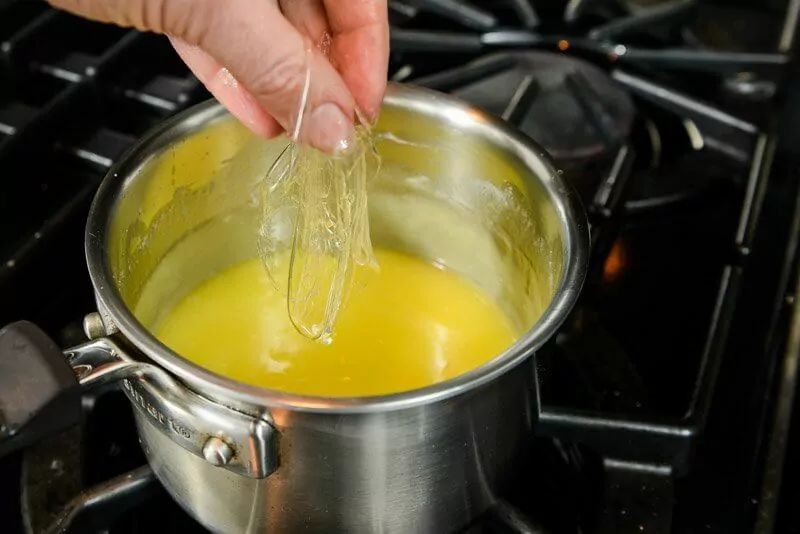
WHAT THE BLOOM IS BLOOM RATING?
A bloom rating is a measurement that specifies the setting strength of the gelatin. Bloom rating ranges from 30 to 300, but not all the strengths are available to the home baker. At a retail level, you’ll find sheets between 100-230 bloom rating. 100 sets the softest, useful for thickening custards, or to stabilize whipped cream. Jello requires a 230 bloom rating for it to set firmly.
Knox brand manufactures a powdered form that measures 225 bloom. Follow the directions on the box for the correct ratio of liquid to powdered gelatin. This will keep your jelly solid when cold, but will liquify at room temperature. To keep your jelly set at room temperature, increase the ratio of gelatin to liquid. Or, for a softer set, increase the amount of liquid. To purchase powdered gelatin with a greater or lesser bloom rate, check with restaurant suppliers. They will likely have access to it.
Alternately, sheet gelatin in different bloom values is available to the retail consumer. The company PerfectaGel produces sheets in five bloom rates: Titanium (120), Bronze (140), Silver (170), Gold (200), Platinum (230). You can buy the sheets in an assortment pack or individually.
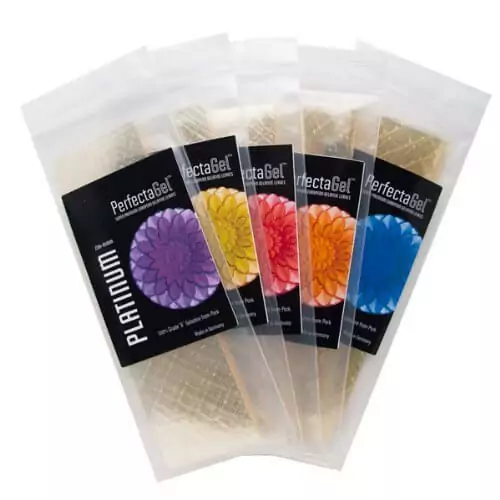
NOTE: You’ll find many brands of gelatin powder and sheets. Most of the time, companies don’t include the bloom rating on their packages. Knox brand doesn’t include it either. It’s best not to assume that all brands of powder are 225 bloom. I learned this the hard way. I once bought a no-name tin of powdered gelatin that didn’t set as hard as I expected. I had such difficulty getting the proper result. Customer Service informed me that this gelatin was rated at 100 bloom. No matter how much I altered the ratio, 100 bloom gelatin will always be a thickener because it’s designed to set softly.
For other references on using gelatin, see the following:
David Leibovitz: How to Use Gelatin
Wikipedia: Gelatin
TO BLOOM OR NOT TO BLOOM? IT’S NEVER A QUESTION
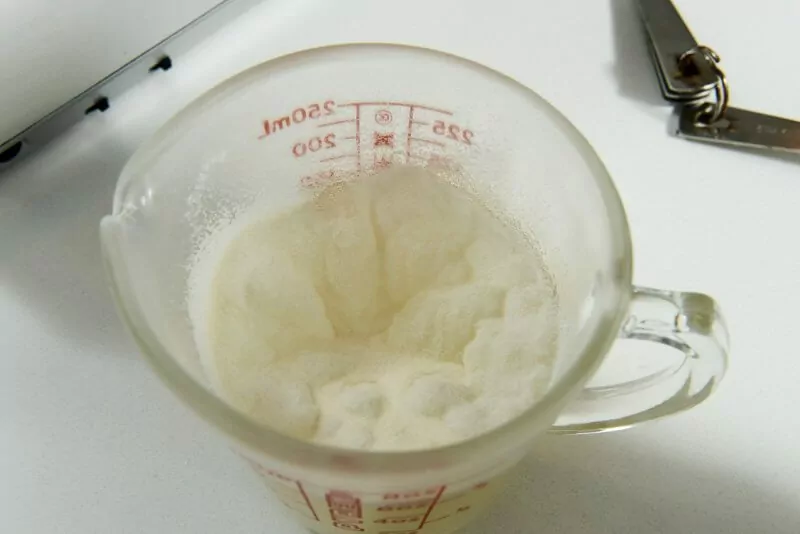
Sometimes a recipe will instruct you to “bloom” your gelatin. It is another way to say soften it. When you bloom powdered gelatin, each granule swells with liquid and becomes a firm mass — a firm mass that will melt when exposed to heat. Note that both forms must be “bloomed.” It cannot go into your recipe in its dry format. As you can see in the image above, if for some reason the powdered gelatin doesn’t soften, or you perceive there’s too little water to bloom all of it, shake out the excess and soften it separately in approximately one teaspoon of water. This way you’ll get the maximum effectiveness.
FIRM FACTS ABOUT GELATIN
- When you want to substitute powdered gelatin for sheets, you must choose a sheet with an equivalent bloom rating. So if Knox is 225 bloom, then choose a sheet that rates at 230. The number of sheets required to set 1 cup of liquid will vary according to the brand you buy. Follow the instructions on the package. If there are no ratios on the package, and the instructions refer you to the recipe, the general rule of thumb is 1 sheet for 1/4 cup of liquid. This isn’t a hard and fast rule, but you can plan accordingly.
- Because most gelatin is derived from beef or pork, it’s non-kosher, non-halal, and not vegetarian.
- Many recipes will suggest your gelatin set for a minimum of 4 hours. In fact, it will continue to set up to 24 hours. Set it faster by adding the gelatinous liquid to a chilled mold.
- Dry gelatin, in either powdered or sheet form, lasts indefinitely. The packaging will likely disintegrate before the product.
- Certain fruits such as pineapple, lemon, kiwi and ginger contain an enzyme (bromelin) that breaks down the collagen and prevents it from setting properly. If it’s possible to heat the fruit prior to adding the gelatin, the heat will destroy the enzyme. You can compensate for bromelin by adding more high bloom gelatin to your recipe.
- Don’t boil any liquid with gelatin in it because it will lose its efficacy.
Disclaimer: The Finer Cookie is a participant in the Amazon Services LLC Associates Program, an affiliate advertising program designed to provide a means for websites to earn advertising fees by advertising and linking to amazon.com. This post contains affiliate links, which means The Finer Cookie will receive a small commission if you make a purchase using this link. This modest income helps support the website.
- Labels
- Baking Tips,
- No Bake,
- Quick and Easy
- Tags
- Baking Tips,
- Gelatin,
- No Bake
